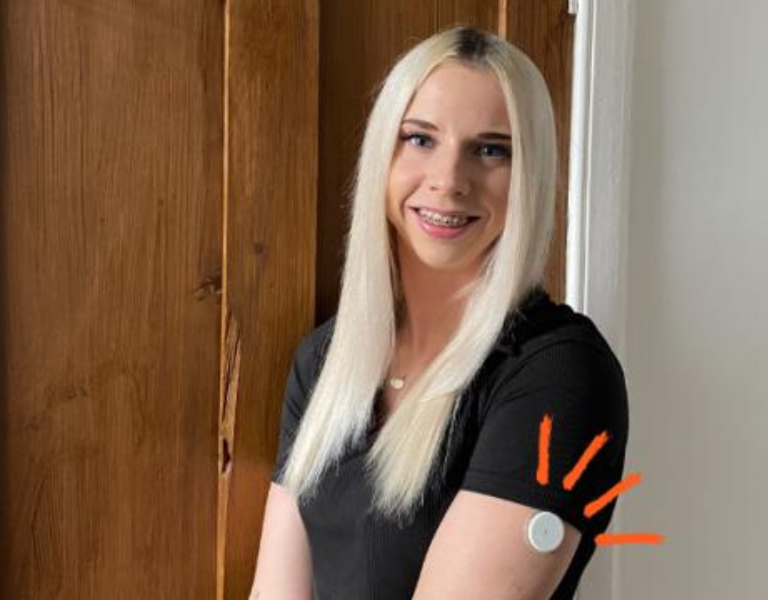
Angela Mitchell,National Director, Diabetes Scotland
People living in poverty face a potential triple burden from diabetes. Firstly, they are more likely to develop type 2 and gestational diabetes than those on higher incomes. Secondly, if they do have diabetes, they are more likely to experience difficulties accessing healthcare services. Thirdly, and partly as a consequence of these difficulties, those with diabetes who live in poverty are at higher risk of complications such as amputation, kidney failure and stroke.
At Diabetes Scotland we've put tackling inequalities at the heart of our strategy and are working in a number of ways to address this including the Tackling Inequality UK Commission and work on preventing type 2 diabetes. But for many people with type 1 diabetes, which can’t be prevented, and for those who already have type 2 or another type of diabetes and rely on insulin treatment to live, a key issue is inequalities in access to diabetes technology.
Diabetes technology not only has the potential to improve blood glucose control and lower the risk of long-term complications, but it can also hugely reduce the mental burden of diabetes, providing an alternative to painful multiple daily finger prick testing and injections. In theory, diabetes technology should be available on the NHS for everyone who is eligible. But in practice, many people find that it isn’t an option for them, or they are stuck on waiting lists that make the prospect of ever accessing tech feel like a distant fiction. Like for Shelley, (pictured above) who told us:
“I even got on the waiting list for the pump, but since COVID, it’s been pushed back and I still haven’t got access to it. My gran has even offered to pay for one privately. It’s quite sad to think; why should people have to do that? It should be equal access everywhere.”
The current reality is that access is far from equal – with massive variation in the rates of tech use between Health Boards. For example, the proportion of young people aged 0-17 with type 1 diabetes who are using an insulin pump is just under half (48.2%) in Scotland, but ranges from 33% to 69.8% between Health Boards, while the proportion using CGM is under a third (31.1%) but ranges from 4.3% to 62.5%. Access is even lower among adults, as only 14.5% across Scotland are using an insulin pump, ranging from 8.4% to 23.7% between Boards, and 5.9% are using CGM, ranging from 2.2% to 14.9%.
These disparities aren’t just unfair, they have a profoundly negative impact on people living with diabetes. As Lesley shared with us:
“The whole process left me feeling small and insignificant. I found myself in a really dark place. I was ready to give up. Meanwhile, other parts of the country are handing out pumps and people are getting CGMs and you're left feeling like a drain on society.”
Much of the geographic variation we’ve found in access to tech is mirrored in inequalities between people from different socioeconomic backgrounds. For instance, a recent analysis of data from NHS Lothian shows that use of hybrid closed loop systems – the most advanced form of diabetes technology – is far higher among people in the least deprived quintile of the Health Board than those in the most deprived quintile. We’ve heard from people living with diabetes that a similar pattern exists nationally in the use of wearable diabetes technology.
In our recent report ‘The Hidden Cost’, we shared our findings that of 6,490 people with or at risk of diabetes who we surveyed in November 2022, 77% said the rising cost of living is negatively impacting how they manage their diabetes or risk of diabetes. Inequalities in access to tech mean that people with diabetes who are living in poverty face an additional burden on top of this.
We launched our Diabetes Tech Can’t Wait campaign this March to push for fair and equal access to diabetes technology for everyone who wants and is eligible for it, regardless of where they live and whether they can afford to self-fund. We want decision-makers to know that diabetes technology isn’t a luxury – for many it’s vital.
You can view the rates of tech usage in your Health Board using our postcode lookup tool here; read more stories like Shelley and Lesley’s here; and join the campaign here.


Enter your email address to receive regular e-updates about our work. If at any time you want to stop receiving these, simply contact us. We’ll keep your details safe and won’t share them with any other organisations for their marketing purposes. For full details see our Privacy Policy.